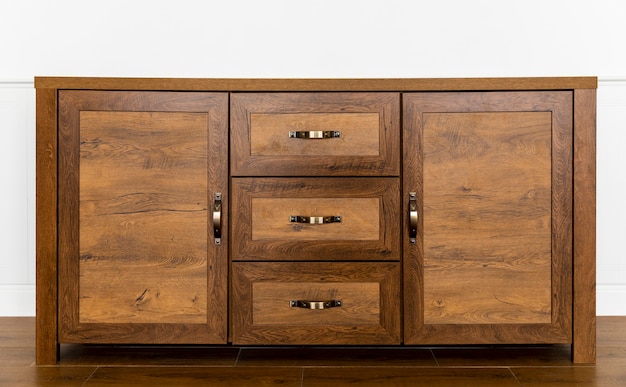How To Pick Child-Friendly Furniture: 7 Essential Tips
Making sure your children’s rooms are safe and adorable at the same time can be particularly challenging.
With rounded edges out of the way and comfy chairs everywhere, the general aesthetic can take a hit.
So, how do you choose child-friendly furniture without sacrificing looks? Also, is the change really crucial?
Well, today, we’ll take you on a quick tour discussing how child-friendly furniture can make a difference as well as how to pick it out. Let’s begin!
Why You Need Child-Friendly Furniture

Buying new furniture can be a hassle. Between trying to accommodate the budget and finding the right pieces, parents tend to give up or skim a little bit here and there.
However, this isn’t the right answer. Many people don’t understand the necessity of child-friendly furniture and believe what they have can work out just fine. Spoiler alert: It doesn’t!
There are various reasons why child-friendly furniture is an essentiality, including the following:
- You get to escape the “Don’t touch that!” zone, as you won’t have to worry about the furniture or the kids while enjoying your daily coffee.
- The little kiddo spilled some juice? Well, thankfully, there’s no need for a meltdown. One of the main aspects of child-friendly furniture is turning those issues into ‘no biggie” moments.
- They help promote good postures from the get-go with their ergonomic mini designs, helping your child grow up healthily.
- With child-friendly furniture, you magically make the toys disappear until the next playing time with the clever storage options.
- Some pieces offer stimulation with cleverly incorporated toys or features that intrigue children.
In a nutshell, child-friendly furniture isn’t just about choosing something that’ll keep your kids safe and your mind at ease; it’s about having furniture that seamlessly blends within your overall lifestyle and helps the kids grow.
How to Choose Child-Friendly Furniture
Picking out the best furniture for your kiddos can be a tad tricky. So here are a few things to keep in mind while shopping:
Always Go For Safety
When it comes to decorating your little ones' rooms, think of safety as the invisible shield that’ll keep them safe and your mind at ease.
To achieve this without accidentally turning the room into a padded cell, you need to start thinking about edges.
That is, say goodbye to sharp corners and opt for furniture with rounded edges to keep those curious explorers from getting bumps and bruises.
Also, have you ever seen a child throwing a temper tantrum? It’s like a mini earthquake! That means any furniture you buy must be well-stabilized so your toddler can’t easily tip it over during their tirade.
Finally, if any part of the object you’re buying looks like it could end up in a tiny mouth, it probably will. Choose furniture with hardware that can’t be easily disassembled or chewed off.
Buy Adaptable Pieces
The main problem with buying child-friendly furniture is that the items are often made for the cutesie childhood part and forget about the pieces’ longevity.
Yet, as we all know, kids sprout up faster than a beanstalk, so it would be nice if the furniture could keep up!
The trick here is to look for items that can morph into something bigger. For example, choose beds that can use extendable frames so you’re not shopping for a new one too soon.
Other than that, you can also consider furniture that can transform its function entirely. A baby changing table that can be a dresser or a crib that can transform into a small sofa or a child seat.
Pick Durable Materials

A little kick with the football here and some legendary drawings with markers there, and your kid’s room can end up looking pretty worn out.
That’s why you need to pick items that can withstand every adventure! To start, solid hardwoods like oak, maple, and birch can help you a lot when it comes to strong furniture.
Put simply, they can take a beating from toy hammers all day and still look pretty for the occasional toy tea party!
Also, when it comes to fabrics, you must pick ones that can endure constant cleaning from juice spills to crayon drawings. You get bonus points if the material doesn’t hold onto odors!
Lastly, check out any pieces’ construction before purchasing. Most importantly, look for dovetail joints and solid fastenings, as these are excellent signs of furniture that won’t wobble or collapse any time soon.
Mix Between Fun and Functionality

Just because you’re looking for safety, doesn’t mean you should drop the fun aspect of furniture. To start, pick out designs that could encourage your child’s imagination.
For example, you can create a little nook in the room with bookshelves all around that they can convert into a cave full of toys and books!
Also, if you look hard enough, you can find furniture with built-in puzzles, chalkboard surfaces, or interactive levers that turn everyday space into adventures.
And if you’re looking to display some things that you wouldn’t want a child to reach, a floating cabinet might do the trick.
Focus on Ergonomic Designs
The difference between us and kids is that the little ones are still malleable. How they sit, stand, and even sleep can affect their bodies growing up.
That’s why, while choosing child-friendly furniture, you must look out for ergonomic designs. Ergonomic designs are products built with the movement and comfort of the human body in mind to reduce any possible pressure.
So, when looking for chairs, for example, don’t just pick anything. Look for chairs with ergonomic designs that are tailored to suit their little bodies and can adapt to future growth.
Make sure they also have fun shapes like dinosaurs or wild animals to attract the kids. More importantly, considering that children are like little bundles of energy, ergonomic furniture should allow for a little bit of wiggle and movement, which can help with concentration and reduce stress.
Avoid Nooks and Crannies

If you’ve reached this far, you’ve already got so much in mind while looking for child-friendly furniture.
Nonetheless, don’t let any of that distract you from the fact that your next decor piece must be low maintenance. After all, you’re living in a world where a juice box is a ticking time bomb!
So, you must look for furniture with surfaces that love a good wipe. Think plastic, metal, or sealed wood.
For upholstered items, go for water-resistant, stain-resistant, or washable fabrics as these are your best friends.
Most importantly, always avoid pieces with nooks and crannies in them. Tiny bits of food can get lodged in, and any liquids can get stuck there, leaving a sticky mess and making it super hard to clean out.
Check for Certificates When Available
Just because a salesperson claims their bed frame is the best on the market or that a particular desk is perfect for kids doesn’t necessarily make it true.
While the material and the overall finish could be fantastic, you still need to do some detective homework.
Firstly, always look for certifications that indicate safety testing and compliance. Organizations like the Consumer Product Safety Commission (CPSC) in the U.S. or the European Union’s CE marking are good signs.
Similarly, keep an eye out for certification that guarantees the use of non-toxic materials. For example, certificates like GREENGUARD or OEKO-TEX™ mean the product has been tested for harmful material and passed with flying colors!
Final Words
To pick out the best child-friendly furniture out there, you need to take a deep breath, as the process can take a while.
However, don’t let that discourage you from this shopping spree!
Buying child-friendly furniture isn’t hard once you know what to look for and avoid. All you have to do is look for safety, durability, adaptability, and functionality.
On the other hand, you need to avoid high-maintenance pieces and inadequate designs. Once you have all that down, the shopping process becomes much more straightforward than anticipated.




